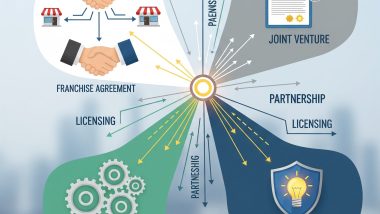Most of us are very much aware of the infamous Peter Drucker quote- “What gets measured gets improved.” The quote is very much relatable in today`s world because many of us readily recognize the importance of Key Performance Indicators (KPIs) and Key Result Areas (KRA).
As the companies are pushing the boundaries to increase productivity and value, KPIs and KRAs play a vital role in a company`s decision-making process. They serve as the necessary success factors for your company. They not only define your ongoing responsibilities, but also enhance communication across teams and other departments, convey strategies across all employees, and help to align them with the company`s goals.
These goals begin from the top and trickle down to every team in the organization, each performing their designated functions to take the business ahead. This is why many start-ups and mid-level companies are taking professional expertise from the business coaches in India to help build clear and well-defined KRAs and KPIs.
But what exactly are KPIs & KRAs?
Firstly, let`s talk about KPI or Key Performance Index. It is a measurable value that determines how successfully a team or an individual is achieving a business objective. Companies across the world use KPIs to guide and help employees towards achieving a common goal. There are also multiple online business courses available for the in-depth knowledge.
It also helps businesses to understand whether they are utilizing and spending time on the right strategies, tasks, and tools to achieve their goals.
On the other hand, KRAs or Key Result Areas form a foundational element in any business. Having a clear and defined goal for each position helps to keep all the team members focused and responsible.
As we have a finite amount of time in the day to accomplish infinite tasks, KRAs ensure that people are making the most of their official working hours to produce the most ROI.
So how can you design effective KRAs & KPIs that will help you achieve your business goals? We have listed out five ways in which you can design, choose and implement KRAs and KPIs:
- Determine your end objective
Creating a clear vision and end goal of what you are trying and would like to accomplish is very essential for any business. A simple and straightforward objective should be connected with your KPIs and KRAs. Every organization might have different KRAs and KPIs. However, it should be specific, easily measurable, and clear to understand.
- Indicators
Once, you identify the business goals, you need to figure out what are the indicators that might speed up the progress towards the goal. One of the common mistakes that managers and leaders do is jump straight from the problem to consider what to measure. This can often lead to confusion and misaligned incentives.
E.g. most of the time, a company tries to improve its customer experience by measuring bounce rate. But what they don`t realize is that there could be plenty of reasons behind the bounce rate. So, just improving the bounce rate does not guarantee a better experience. Working on the efficiency of his or her digital marketing campaigns might produce better results.
- Ensure everyone is on the same page
Organizational KRAs usually involve KRAs and KPIs of all the departments, teams, and individuals. It is very important to ensure that everyone is aligned with the KRAs developed at the company level. To make this concept clearer, multiple discussions must take place. It is paramount to build an understanding that the progress of KRA in every company will be measured and calculated by KPIs. Hence, every team, department, and employee must understand their KPIs to ensure that a particular organizational KRA sees improvement.
If you are unsure about how to do that, you can take professional help from a business coach who can help you build effective KRAs and KPIs.
- Set SMART KPIs
As we all are aware of the fact that KPIs affect KRAs, the leaders must assign SMART goals to each department, team, and individual. Goals should be easily measurable, specific, realistic, possible to achieve, and time-bound. This will make it easier for everyone to achieve their goals and contribute towards organizational growth.
- Everything should be in written
To ensure that everyone is clear about their KPIs and KRAs, simple templates can be used to share among the concerned people. Hence, while setting the organizational goals, one should have the KRAs and KPIs of every department, team, and individual in one place. This will simplify the tracing of every action. The templates should also mention the reporting managers along with their respective departments.
An organization, be it large or small, needs to create KRAs by setting different KPIs at the employee, team, and department levels. KPIs should be realistic, achievable, clear, and growth-inducing. The bigger picture and the ultimate objective of the organization should always remain in the focus. Hiring the best business coach can also be a smart move in this context.
Are you struggling with your organizational growth due to improper KPIs and KRAs? Get practical solutions easily with our step-by-step learning strategies, action plan, frameworks through our Problem Solving Courses that are designed to empower you with various business functions. From finance to HR, Digital Marketing to IT & Sales, find creative solutions to prominent business problems easily.
















